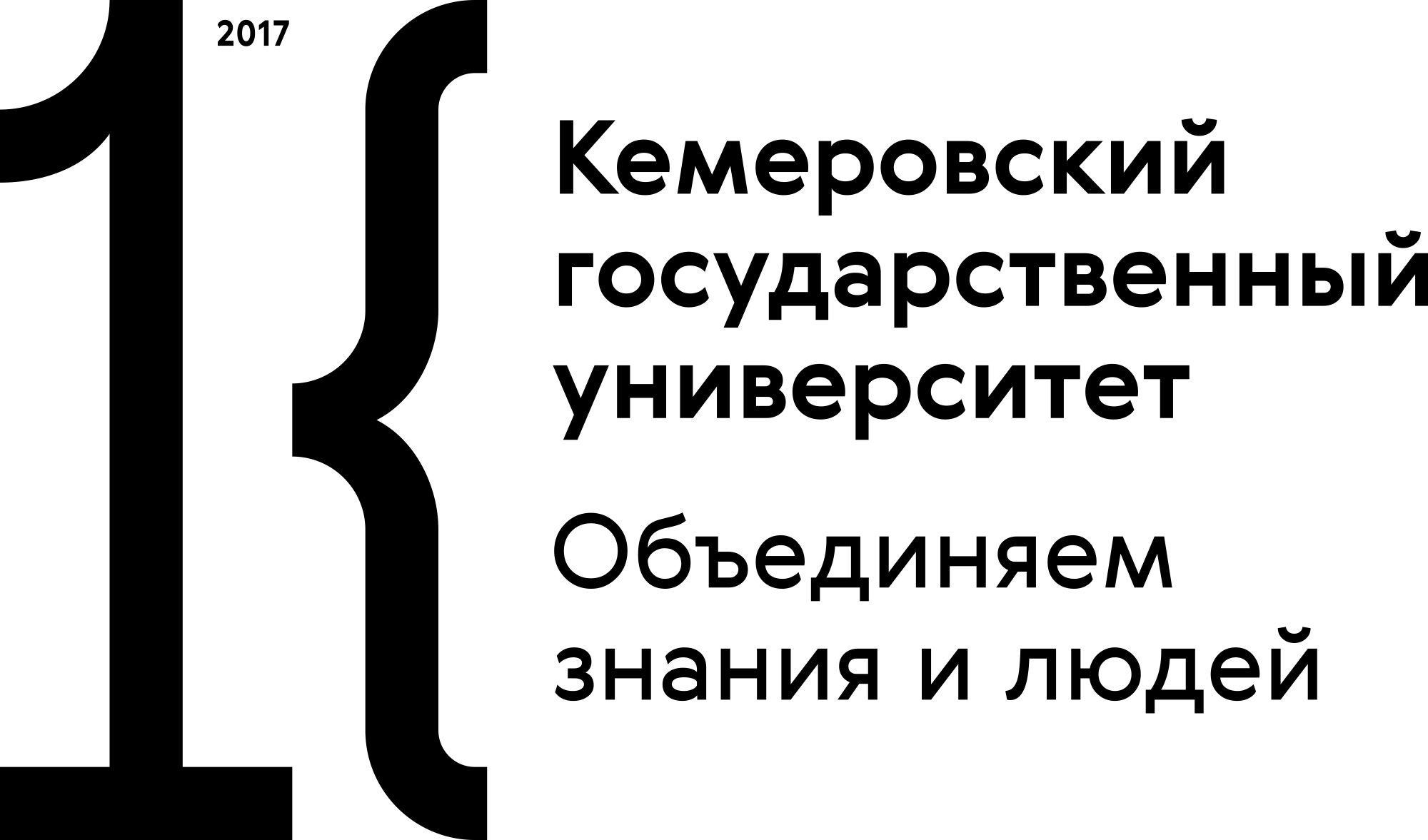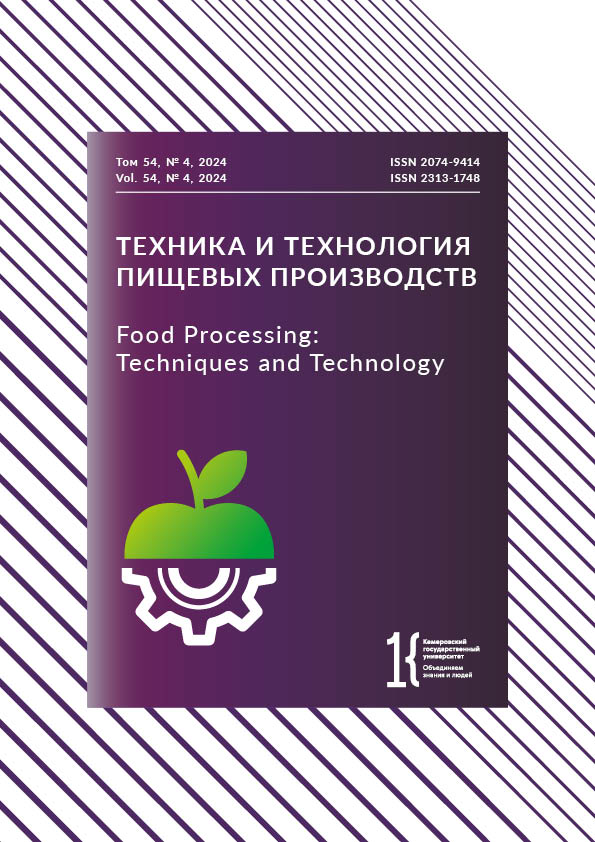Kemerovo, Kemerovo, Russian Federation
Kemerovo, Russian Federation
Kemerovo, Russian Federation
The quality of life is a complex characteristic of the level and conditions of people’s life. This indicator reflects the degree of satisfaction, as well as the subjective perception of life and its individual aspects. In this regard, the quality of life is the most important indicator of the socio-economic development for separate communities and the nation as a whole. However, science has no unified system of indicators to determine the quality of life or its correlation with various threats, i.e., downside risks. Food consumption is an important element in assessing the quality of life, and food risk is a component of the overall downside risks. The research objective was to develop a methodology for determining food risks as an indicator of the quality of life. The authors studied the level of food consumption by the population of Russia as a whole and the population of the Kemerovo Region. The consumer food price index served as an indicator of food risks in the system of the quality of life. The study relied on standard research methods and involved a review of scientific sources and official documentation. Statistics for 2012–2022 underwent a comparative analysis of regional vs. federal data to determine the degree of deviation, which reflected the food risks to the quality of life. The Kemerovo Region proved to lag behind the Russian average in five out of nine food products, i.e., vegetables and melons, vegetable oil, fruits and berries, dairy products, and sugar. The regional deviation was smaller in the case of meat and meat products. The consumption of bread products and eggs approximated the federal level. Potato consumption was above average. Food prices appeared to grow at a slower pace than in the country as a whole. The comparative analysis of actual vs. standard food consumption in the region demonstrated a severe long-term shortage of fresh fruits, berries, vegetables, melons, dairy products, oil, and meat in the diet of local residents, who try to compensate for this shortage with potatoes, eggs, bread, and bakery products, not to mention sugar. The estimated level of food risks for the quality of life proved to be 10–11%, i.e., a stable lag behind the all-Russian indicators of food availability. Food risk assessment is an important indicator of the quality of life. It reveals problems in the regional food security and makes it possible to develop the necessary measures. Food risks can be reduced by increasing the local agricultural production, improving the trade logistics for specific goods, optimizing the regional food supply management, and promoting the healthy lifestyle.
Quality of life, food, food products, consumption, consumption standards, risk, food security, Kuzbass
1. Aivazian S, Mikhail A, Alexander K. Integral indicator of quality for life conditions. Digital Economy. 2019;(1):43–56. (In Russ.).https://elibrary.ru/ZSELNZ
2. Bobkov VN, Odintsova EV. Low level and quality of life among economically active population: identification criteria and assessment of occurrence. Economic and Social Changes: Facts, Trends, Forecast. 2020;13(5):168–181. (In Russ.). https://doi.org/10.15838/esc.2020.5.71.10; https://elibrary.ru/XAVDSD
3. Golovin AA. Critical analysis of methods for measuring and monitoring of the population life quality. Upravlenie. 2021;(4):30–42. (In Russ.). https://doi.org/10.26425/2309-3633-2021-9-4-30-42; https://elibrary.ru/WEJXYA
4. Zubets AN. Russian and international approaches to quality-of-life assessment. Moscow: Financial University under the Government of the Russian Federation; 2020. 112 p. (In Russ.).
5. Akulov AO, Babina SI, Belchik TA, Gryaznova NL, Donova IV, Egorova NM, et al. Assessing the socio-economic state of the region and the implementation of its development strategy. Kemerovo: Kemerovo State University; 2021. 355 p. (In Russ.). https://elibrary.ru/WBHYEF
6. Mikhailova MV. Quality of life of the population as a social dominant of state and municipal policy. St. Petersburg: Saint Petersburg State University of Economics; 2020. 133 p. (In Russ.). https://elibrary.ru/ MSORNO
7. Kosinsky PD, Kharitonov AV. Interrelation of quality of food and quality of life population: regional aspect. International Journal of Applied and Fundamental Research. 2017;(7):130–133. (In Russ.). https://elibrary.ru/ZBDLJP
8. Rashid FN, Sesabo JK, Lihawa RM, Mkuna E. Determinants of household food expenditure in Tanzania: implications on food security. Agriculture and Food Security. 2024;13:13. https://doi.org/10.1186/s40066-023-00462-0
9. Mann S, Loginova D. Distinguishing inter- and pan generational food trends. Agricultural and Food Economics. 2023;11:10. https://doi.org/10.1186/s40100-023-00252-z
10. Khng K, Chang C-C, Hsu S-H. Implications of food and nutrition security on household food expenditure: the case of Malaysia. Agric and Food Security. 2022;11:30. https://doi.org/10.1186/s40066-022-00367-4
11. Manikas I, Ali BM, Sundarakani B. A systematic literature review of indicators measuring food security. Agric and Food Security. 2023;12:10. https://doi.org/10.1186/s40066-023-00415-7
12. Wang X, Cui R, Tian X, Qian J. The Belt and Road initiative and food consumption in countries along the route. Agribusiness. 2023;39(1):1624–1646. https://doi.org/10.1002/agr.21852
13. Elagina AS. Dynamics of food consumption in the Russian Federation. Economics: Yesterday, Today And Tomorrow. 2023;13(1-2):305–312. (In Russ.). https://doi.org/10.34670/AR.2023.53.94.001; https://elibrary.ru/NCRZHV
14. Stanchin IM. Food consumption in Russia over a 100-year period. Territory of Science. 2014;(6):161–168. (In Russ.). https://elibrary.ru/TJDJWH
15. Dolgova IE. Studying the experience of forming the consumer basket of the population. Innovative, Educational, Natural and Social Sciences. 2023;3(24):246–250. (In Russ.). https://doi.org/10.5281/zenodo.10542049
16. Zhelezovskaya LA. Agrarian sector of Rusia: challenges and prospects of growth. Era of Science. 2019;(17):32–37. (In Russ.). https://doi.org/10.24411/2409-3203-2018-11708; https://elibrary.ru/ZAQKZV
17. Safonov AYu. Food safety in agriculture: consumption of main food products and import substitution. Moscow Economic Journal. 2019;(9):21. (In Russ.). https://doi.org/10.24411/2413-046X-2019-19029; https://elibrary.ru/GGDJGW
18. Khramtsova TG, Khramtsova OO. Analysis of food consumption in the context of food security. Vestnik NSUEM. 2017;(3):249–257. (In Russ.).https://elibrary.ru/ ZPCZQL
19. Kazantseva EG, Lyamkin II. Micro-Ingredient Markets and Their Impact on the Sustainability of Food Systems. Food Processing: Techniques and Technology. 2023;53(1):202–216. (In Russ.). https://doi.org/10.21603/2074-9414-2023-1- 2424; https://elibrary.ru/HOCFYJ
20. Maksimova-Kulieva EA. Household food consumption and Russia’s food independence. Bulletin of the Altai Academy of Economics and Law. 2022;(5-2):206–212. (In Russ.). https://doi.org/10.17513/vaael.2198; https://elibrary.ru/LQCOAU
21. Bogachev AI, Dorofeeva LN. The state of food security, consumption of basic foods and food quality in Russia. Bulletin NGIEI. 2023;(80):86–104. (In Russ.). https://doi.org/10.24412/2227-9407-2023-8-86-104; https://elibrary.ru/NOTWSE
22. Vaskin VF, Korosteleva ON. Food consumption and composition of expenditures for food of residents of the Bryansk region. Bulletin of the Kursk State Agricultural Academy. 2020;(3):47–54. (In Russ.). https://elibrary.ru/KRBIAO
23. Chernova S. Impact of population income on food consumption in the Siberian Federal District. AIC: Economics, Management. 2021;(6):49–54. (In Russ.). https://doi.org/10.33305/216-49; https://elibrary.ru/XVKKMB
24. Shkiotov SV, Markin MI. The impact of real disposable cash income of the population on the economic availability of food in Russia. Theoretical Economics. 2021;(6):119–125. (In Russ.). https://doi.org/10.52957/22213260_2021_6_119; https://elibrary.ru/DRBDCK
25. Sculskaya LV, Shirokova TK. Some of the aspects of modern food policy. Economy and Business: Theory and Practice. 2019;(2):123–132. (In Russ.). https://doi.org/10.24411/2411-0450-2019-10379; https://elibrary.ru/YZCTYT
26. Lisitsyn AB, Chernukha IM, Nikitina MA. Russian methodology for designing multicomponent foods in retrospect. Foods and Raw Materials. 2020;8(1):2–11. https://doi.org/10.21603/2308-4057-2020-1-2-11; https://elibrary.ru/ MOLNCR
27. Bandurin AP. Rational and irrational in social regulation of production and consumption food products. Humanities, Social-Economic and Social Sciences. 2022;(11-1):25–28. https://doi.org/10.23672/f5462-3511-5802-u; https:// elibrary.ru/CWRBNZ
28. Grechushkina NA. Public policy measures to manage nutrition-related health risks. City-Healthcare. 2022;3(1):65–72. (In Russ.). https://doi.org/10.47619/2713-2617.zm.2022.v3i1;65-72; https://elibrary.ru/SHBIAI
29. Gruzdeva VV, Igoshin AN. Some aspects of food consumption in the region. Bulletin NGIEI. 2017;(9):110–118. (In Russ.).https://elibrary.ru/ZJTXGH
30. Kremlev ND. Assessment of the region’s population adaptation to food consumption norms. Ars Administrandi. 2022;14(1):66–81. (In Russ.). https://doi.org/10.17072/2218-9173-2022-1-66-81; https://elibrary.ru/BFINWC
31. Sergienko AM. Changes in food consumption by the population of the altai territory across different stages of economic development: a methodological analysis. Economics Profession Business. 2023;(1):90–100. (In Russ.). https://doi.org/https://doi.org/10.14258/epb202310; https://elibrary.ru/MCBJMQ
32. Alikperova NV, Yarasheva AV. Food consumption: regional differentiation. Regional and Sectoral Economy. 2023; (8):65–74. (In Russ.). https://doi.org/10.26726/1812-7096-2023-8-65-74; https://elibrary.ru/XEWRBI
33. Rogacheva OA. Dynamics of consumption of basic foodstuffs in the Irkutsk region. System Analysis and Mathematical Modeling. 2022;4(2):152–160. (In Russ.). https://doi.org/10.17150/2713-1734.2022.4(2).152-160; https://elibrary.ru/ TFUZYV
34. Sekacheva VM, Izhmulkina EA. Current trends and forecasting of food security of Kemerovo region. Siberian Financial School. 2012;(1):25–33. (In Russ.). https:// elibrary.ru/OXKMQT
35. Kharitonov AV. The regional food market in a context ensuring food security. Management of economic systems: Digital Scientific Journal. 2019;(5):6. (In Russ.).https://elibrary.ru/BDAAGZ
36. Bondareva GS, Bondarev NS. Providing the population of Siberia with food: theory and methodology. Kemerovo: Kuzbass State Agricultural University; 2019. 315 p. (In Russ.).
37. Izhmulkina EA, Bondarev NS, Bondareva GS. Food supply forecasting in the Kemerovo region. Reelvant issues of storage and processing of agricultural raw materials. Kemerovo: Kuzbass State Agricultural University; 2020. pp. 5–18. (In Russ.). https://elibrary.ru/ODJNKP
38. Bondareva GS. Research methodology for socio-economic processes in food provision. Kemerovo: Kuzbass State Agricultural University; 2022. 127 p. (In Russ.). https://elibrary.ru/ GEGCZX
39. Shchekotin YeV. Issue of evaluation of quality of life in conditions of unstable socium. Vestnik NSUEM. 2013;(1): 151–161. (In Russ.). https://elibrary.ru/PYCIIR














